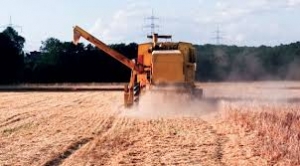The Vanishing Small Farm
 Everywhere, all over the country, all around the world, small farms are disappearing. According to a USDA report, after peaking at 6.8 million in 1945, U.S. farms fell sharply until the early 1970s; by 2002, only 2.1 million farms remained. If you’ve lived long enough, chances are you remember a few of these small farms, perhaps fondly.
Everywhere, all over the country, all around the world, small farms are disappearing. According to a USDA report, after peaking at 6.8 million in 1945, U.S. farms fell sharply until the early 1970s; by 2002, only 2.1 million farms remained. If you’ve lived long enough, chances are you remember a few of these small farms, perhaps fondly.
But why is this happening? Exactly what forces are at play here? And is there any cause for hope?
Part of the blame can be laid upon farmers’ children’s unwillingness to take over a business that requires them to work up to 16 hours a day during the growing season, while making a fraction of what they could make elsewhere. That plus the modern social stigma associated with farming—toiling in the dirt just isn’t as glamorous as practicing law or medicine—have lead to an overall decreased interest in farming.
But an even larger factor is the ever-increasing expenditures associated with farm ownership. Since 1984, production expenses skyrocketed to $197.5 billion, or 88 percent of gross cash income. And the cost of just living on a farm—healthcare, electricity, heat, etc.—now exceeds an average of $47,000 per year, often less than net income.
The rise of supersize factory-farms presents another obstacle. As more and more farms consolidate and incorporate, involving themselves in distribution, processing, and storage procedures, smaller farms are squeezed out. Add to that Wall Street speculator’s recent zeal for farmland ‘investment’—buying up large swaths of land, driving up prices—and it’s easy to see why small farms are on the decline.
 And then there’s subsidies. Taxpayer-sourced monies paid to industries to produce goods at artificially cheap prices (to suppress social unrest and encourage export competitiveness) have had a devastating effect on small farmers, forcing them to sell their goods at unsustainably low prices. Subsidies are also to blame for chronic overproduction which further drives down prices.
And then there’s subsidies. Taxpayer-sourced monies paid to industries to produce goods at artificially cheap prices (to suppress social unrest and encourage export competitiveness) have had a devastating effect on small farmers, forcing them to sell their goods at unsustainably low prices. Subsidies are also to blame for chronic overproduction which further drives down prices.
Though this trend does not show any immediate signs of reversing, the rise of organic farming—both small and large scale—has helped soften the blow. Indeed, as a recent Mother Jones piece concludes, organic farming is now more profitable than conventional. The fact that consumers are willing to pay more for a premium product is good news for small farmers everywhere who are looking to keep doing what they love.
